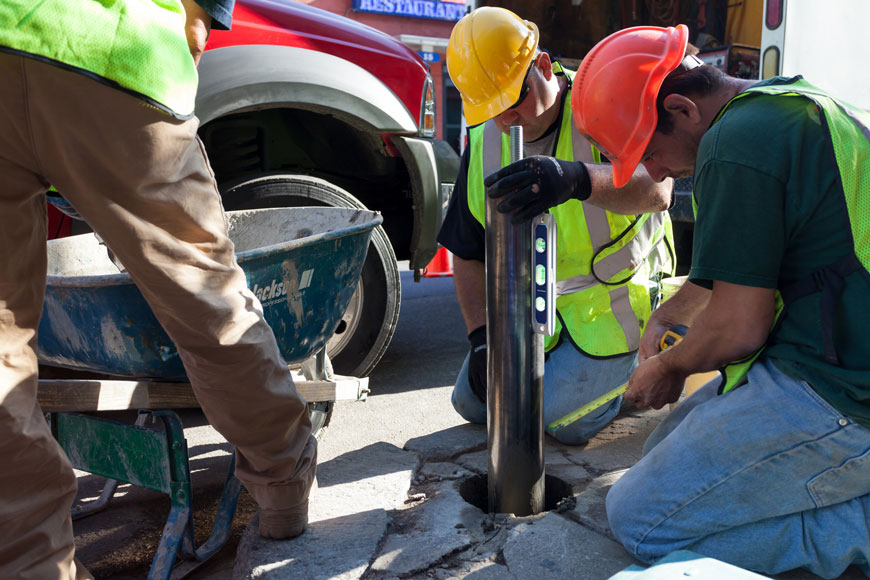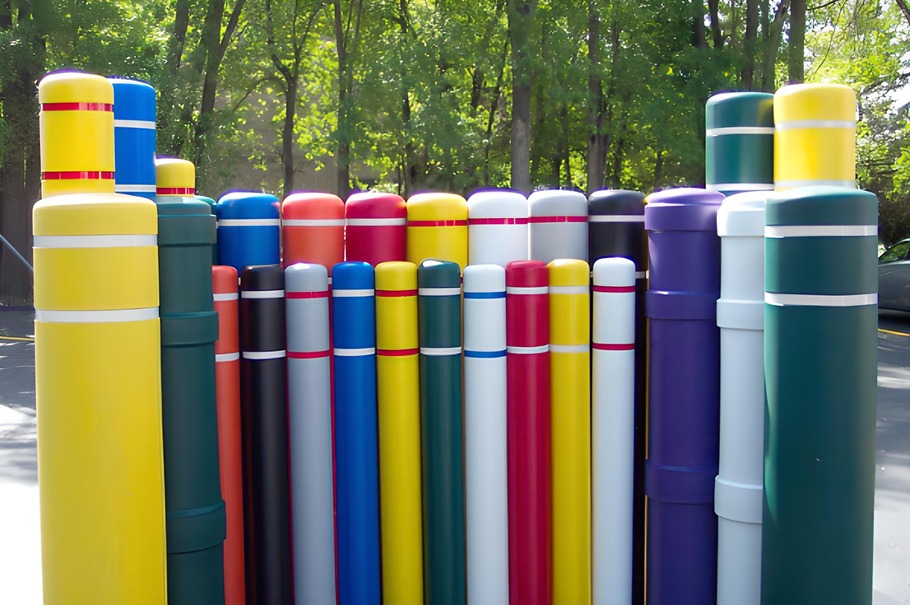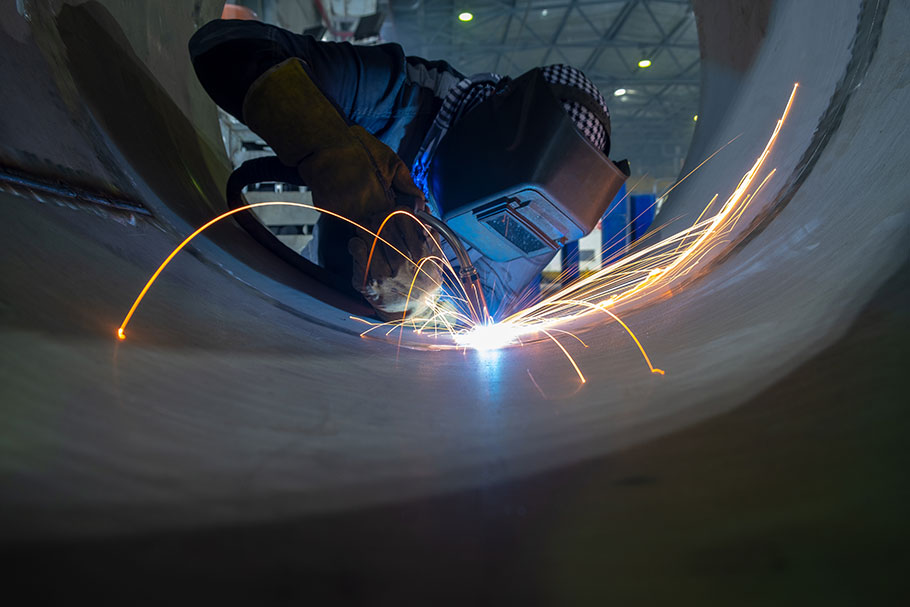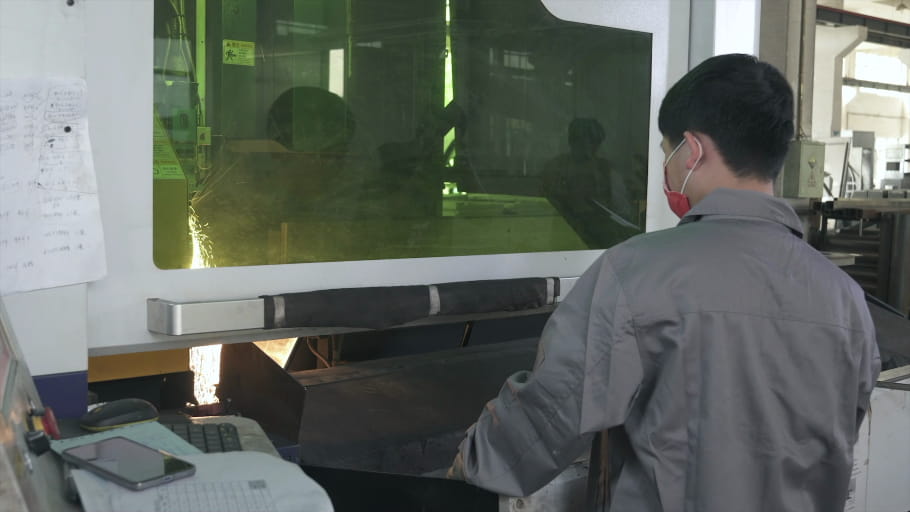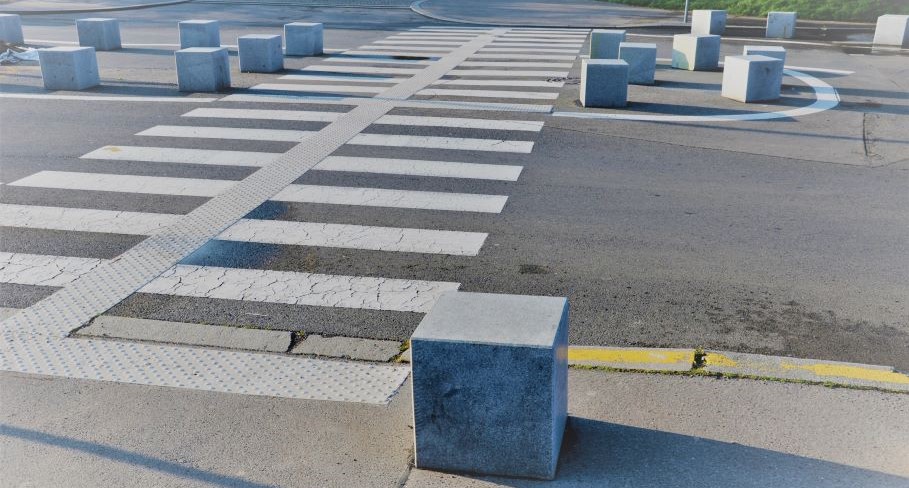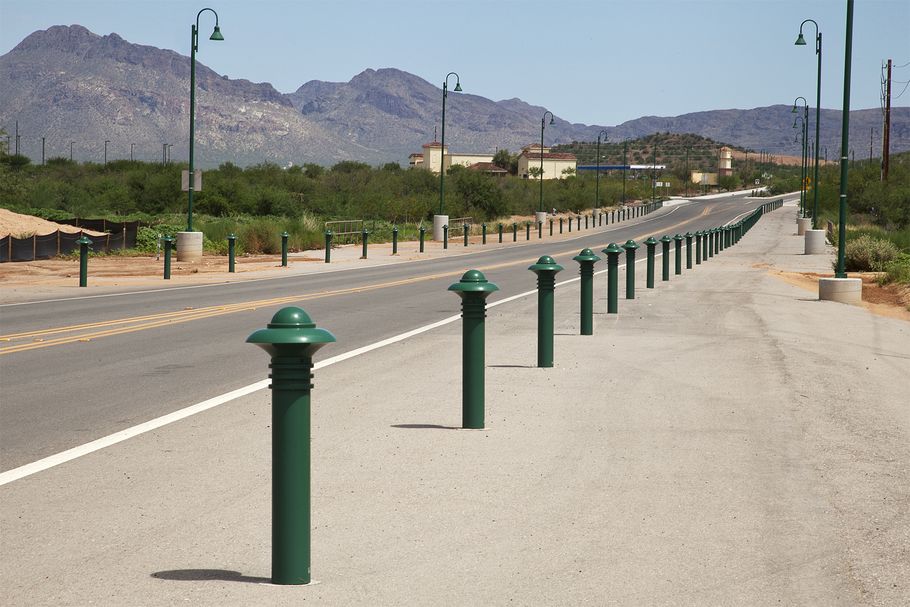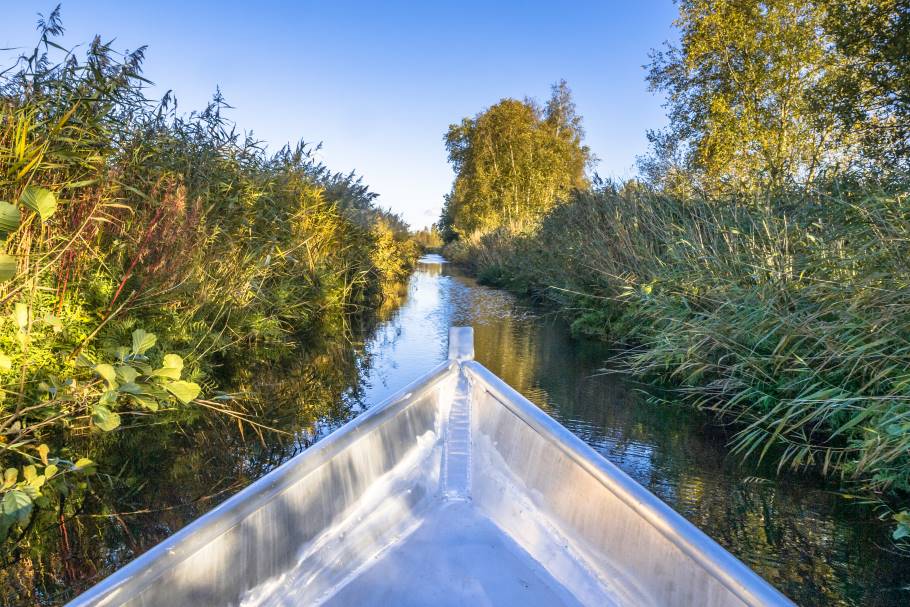Counter the installation challenges brought on by asphalt’s softer properties
What is asphalt?
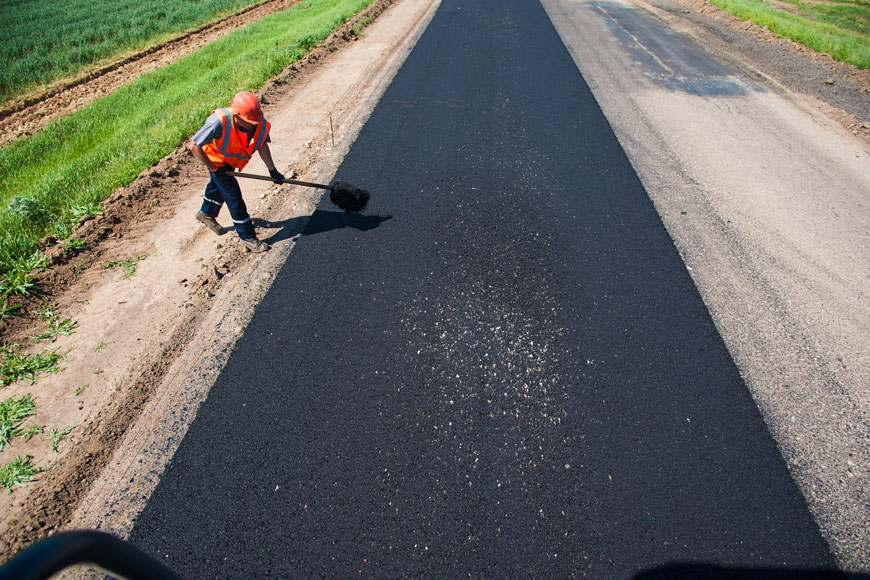
Asphalt is a black, viscous liquid or semi-solid form of petroleum prevalent in urban construction from roads to racetracks to airport runways. Also called “bitumen,” asphalt is made either from the residue of petroleum distillation or from natural deposits. This waterproof, adhesive, ductile substance contains hydrogen and carbon compounds with small portions of nitrogen, sulfur, and oxygen. Road construction depends on asphalt concrete, which is produced by mixing aggregate particles with a bitumen binder. Based on the end use, asphalt is produced to specification by utilizing refining or blending techniques.
The modern world uses approximately 102 million tons of asphalt per year. With so much present in the built world, asphalt often serves as the foundation for various structures, site furnishings, and traffic guidance devices. Among these devices are bollards—traffic guidance posts with aesthetic appeal that define space and provide security measures. Standing at an optimal height for visibility, they establish key visual cues for drivers and mark exposed building areas, utility boxes, booths, and pedestrian walkways. Bollards require a very firm, stable footing, and this is the main concern when it comes to asphalt installation as asphalt is known for its more pliable properties.
Types of asphalt (bitumen)
Various types of asphalt mixes are used in road construction. They use different processing techniques and result in their own pros and cons.
Hot-mix asphalt
Hot-mix asphalt is laid with its temperature at over 300°F. This high heat causes the bitumen to lose viscosity, producing a harder final surface. Aggregate must be dried to remove moisture before mixing at these temperatures. Temperatures reach 300–330°F for pure asphalt, but are lower (200°F) for asphalt cement. Hot-mix is usually paved in the summertime because winter climates run the risk of the surface cooling before it can be packed. Hot-mix is commonly used to build air-tracks in air fields as well as racing tracks.
Warm-mix asphalt
Warm-mix asphalt is applied at 200–250°F and made by adding materials such as waxes, zeolites, or asphalt emulsions with a binder before mixing. The mixing process is performed at a lower temperature when compared to hot-mix, resulting in lower consumption of fossil fuels and lower emission of aerosols and carbon dioxide. Warm-mix asphalt is also laid at a lower temperature and is not restricted to summer construction, so it can be done in any season. Roads with moderate traffic are typically made from warm-mix.

Cold-mix asphalt
Cold-mix asphalt involves emulsifying asphalt in water with soap before mixing. This process lowers the viscosity and makes it easier to work with. After the paving is laid, the water begins to evaporate, resulting in a breakdown of the emulsification. This leads the cold-mix to gradually take on the properties of hot-mix asphalt. However, its durability is not as strong as hot-mix or warm-mix, and so cold-mix asphalt is generally used on rural roads where traffic is low.
Mastic asphalt
Mastic asphalt is created by heating bitumen until it turns viscous. It is then added to an aggregate mix and cooked for 6–8 hours. The entire mixture is emptied out and laid directly onto the site where road construction will be performed.
Cut-back asphalt
Cut-back asphalt is like cold-mix: additives make the asphalt easier to work with but will evaporate once the paving is done. In cut-back mixtures, these additives are kerosene or other petroleum. However, this type of asphalt is not environmentally friendly, and pollutants are created during processing. It is therefore rarely used in modern construction.
Asphalt in the built world
Different types of asphalt exist for road construction and offer unique performance characteristics when it comes to surface durability, wear, and noise. Asphalt typically generates less roadway noise than cement concrete surfaces, however, it is susceptible to degeneration such as cracking, potholes, raveling, and rutting.
Asphalt vs. concrete
Asphalt has distinct physical characteristics that differentiate it from concrete. Due to a bitumen binder, it is softer and darker in color and has a smoother surface—there are no visible seams between sections. Concrete is harder due to its cement binder, and cement can include decorative features like custom patterns and colors. Bitumen does not have these aesthetic options. Asphalt is less costly at about half the cost of concrete on average, and has a quicker curing time of approximately 4–5 days.

Heat sensitivity
Asphalt is particularly sensitive to temperature. High temperatures can soften bitumen to the point where heavy loads may deform the pavement. If the binder breaks down completely, the asphalt will start to crack into loose chunks. Sun damage can cause raveling and shrinking cracks to develop, allowing water to seep under the surface and cause further damage. Heat sensitivity is a major concern when it comes to installing anything into asphalt.

Installing bollards in asphalt
Installing bollards directly into asphalt without using concrete footings is unsafe and not recommended. Due to the bitumen’s sensitivity to heat, there is no way to control its hardness throughout the hot seasons. Asphalt used for driveways and parking lots do not provide a rigid enough base for installation. With such an ambiguous footing, a bollard’s impact-resistant properties will be compromised. The bollard is also at risk of toppling over on its own if the asphalt foundation softens under high temperatures. This can be especially hazardous in crowded areas such as parking lots where a falling bollard might cause injury to people and damage to property.
Concrete forms for bollard installations in asphalt
Safely installing bollards in asphalt is possible with an installation method using concrete forms and anchor castings. This method is designed for bollards that will be installed on a surface that is not entirely composed of concrete.
This installation requires coring the area, placing a concrete form and anchor casting in the site, then pouring concrete around it. The bollard is then set over the anchor casting and a threaded rod is lowered through the bollard base, tightened, and secured. Once the installation is successfully complete, the bollard stands fixed in a stable footing. This ensures that the bollard will not be affected by the asphalt’s changing properties due to shifts in temperature and climate.
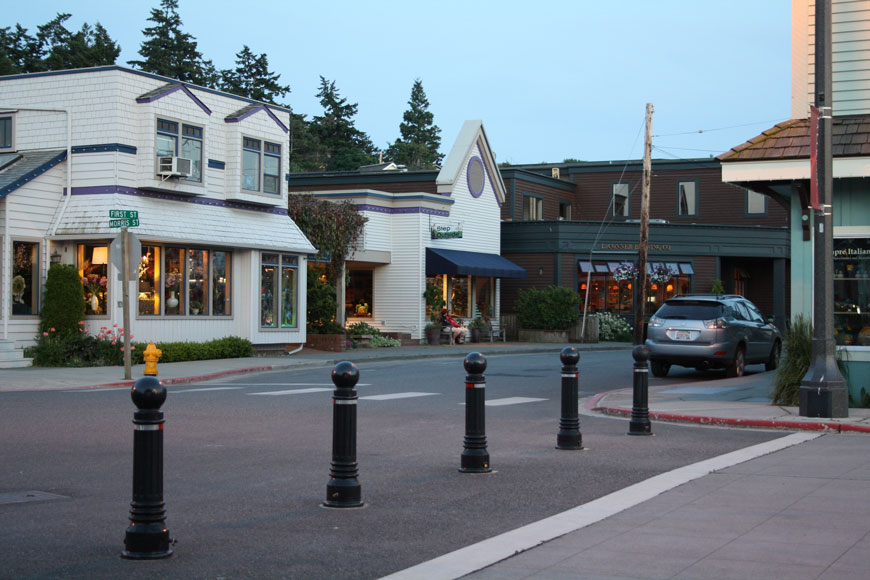
Working with asphalt
Asphalt is common in many areas that require bollards to protect pedestrians, demarcate lanes, and offer access control. There is no need to hesitate from installing these practical traffic guidance devices as long as the installer has the right knowledge and equipment. Using concrete forms to counter the softer properties of asphalt and preparing for changes in temperature will all ensure a successful installation with a long service life.



